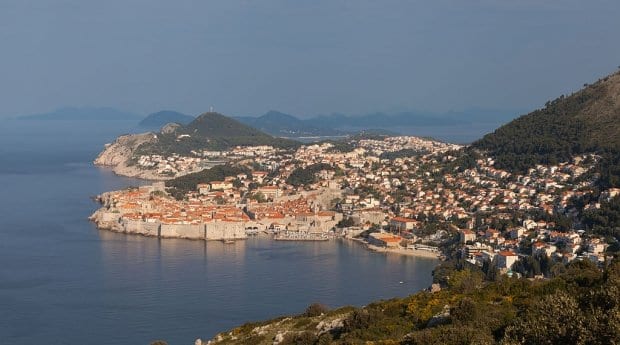When one thinks of nations that were formerly part of Yugoslavia, many things come to mind: war, genocide, jawbones that could carve a roast. Gay travel destination, however, is probably not on that list. And for good reason, as many of these places remain unsafe for any tourist, least of all those of the homosexual variety.
However, one country in the region has managed to transform itself into a coastal paradise. Croatia (along with Slovenia) was the first country to declare independence from the Socialist Federal Republic of Yugoslavia in 1991 and has since established itself as a major tourist destination, with the city of Dubrovnik becoming the single largest tourist destination on the Adriatic Sea.
Although not the capital, Dubrovnik is one of the most beautiful and historic cities in Eastern Europe. Located at the southern tip of Croatia on the Dalmatian Coast, the city is known as the “Pearl of the Adriatic,” and its old town was declared a UNESCO World Heritage Site in 1979.
Local lore claims that Dubrovnik was founded in the seventh century by a group of refugees from nearby Epidaurum who built the wall around the old city and established it as a major trade port. Despite a crippling earthquake that nearly destroyed the city in 1667 and artillery damage sustained during the Homeland War of 1991, the old city remains one of the best-preserved examples of late-medieval walled cities in the world.
Even if you’re not a culturally inclined person, Dubrovnik’s collection of Gothic, Renaissance and Baroque churches, buildings and fountains is enough to make your jaw hit the floor. Entrance to the old city is free, as is entrance to all churches and courtyards. It is a delight to get lost for hours in the winding, steep alleyways of the old city, in what can feel like a freefall through time.
There are also a few highly recommended paid excursions. For about $12 you can climb to the top of the wall and tour the entire city from above. The optional audio guide provides a rich and detailed history, but the view and photo ops alone are worth the price of admission.
The best view of the city is yours for approximately $13: take the cable car from the north gate of the old city to the top of Srd Mountain, which overlooks the city and the Dalmatian Coast. The cable car unloads at a touristy lookout point, which is quite enough for most, but if you head outside this building and take a left up the hiking path to the top, you can take in the breathtaking views virtually alone. As well as being the best vantage point in the area, Srd Mountain is also the site of the Croatian army’s last stand against Serbian invaders in the early 1990s. Many of the trenches are still intact, and there is a small museum depicting life in the besieged city.
Dubrovnik is a city of culture and ancient wonders, but that doesn’t mean you can’t find some serious fun. While wandering around you might notice a small doorway in the southern wall. Through this door is a flight of stairs leading down to a café that overlooks the Adriatic. This is also where you will find a number of adventurous people, most of them young, plummeting into the Adriatic from cliffs ranging in height from five to 25 metres.
The island of Lokrum, located 500 metres off the coast, is the site of the gayest thing in all of Croatia: a nude beach. Now, when I say “beach,” I use it in the Croatian sense, which means “a series of jagged rocks on which to perch by the sea.” Despite its lack of sand, it is a beautiful place to swim and meet fellow members of the queer community, both local and non. Lokrum was established as a monastery in 1023 and is well worth a look around.
If you are planning to stay in Dubrovnik for a few days, your best bet is to look online for a rental apartment in the old town. Even though the city is centuries old, most buildings are in good working order, with all the luxuries of the first world (including WiFi). Accommodations within the old city are slightly more expensive than outside of it, but the experience of staying in a UNESCO World Heritage site is exhilarating — and it puts you at the heart of the action.
Even though Croatia’s prime minister announced that he intends to pass some sort of same-sex-union legislation, the country remains a very Catholic place. Besides the nude beach on Lokrum, there are no gay-owned or even openly “friendly” businesses, clubs, restaurants or areas in Dubrovnik. But if you pay attention, you will occasionally spot members of the queer community among the local population, even if many are still closeted. And if all else fails, there is always Grindr.
For more information, visit croatia-gay.com.

 Why you can trust Xtra
Why you can trust Xtra